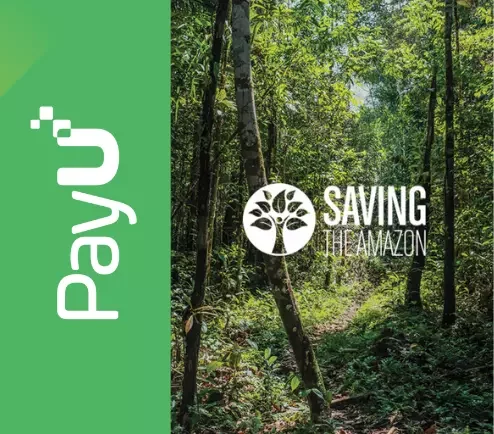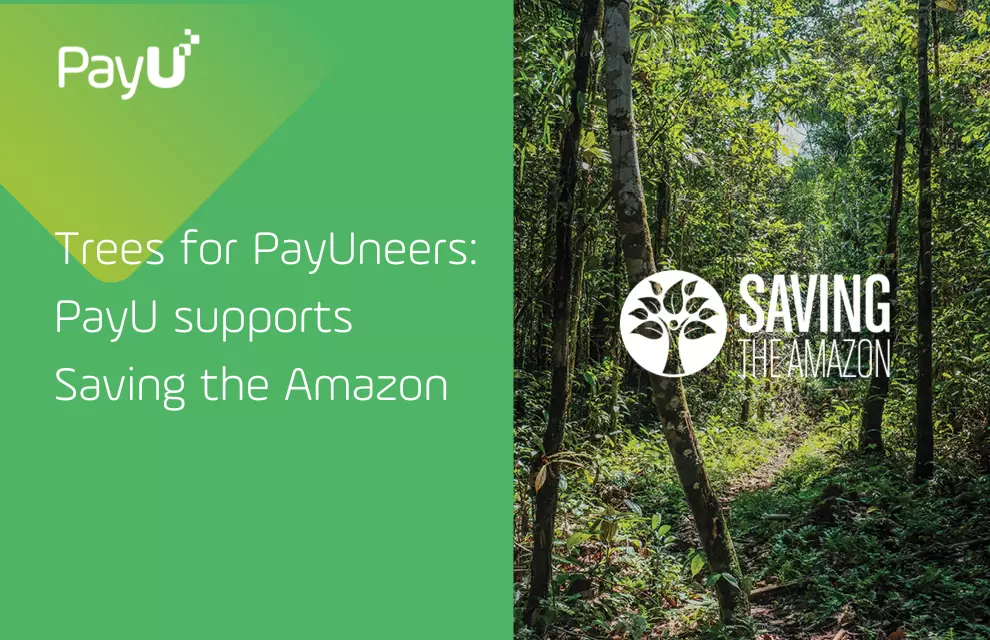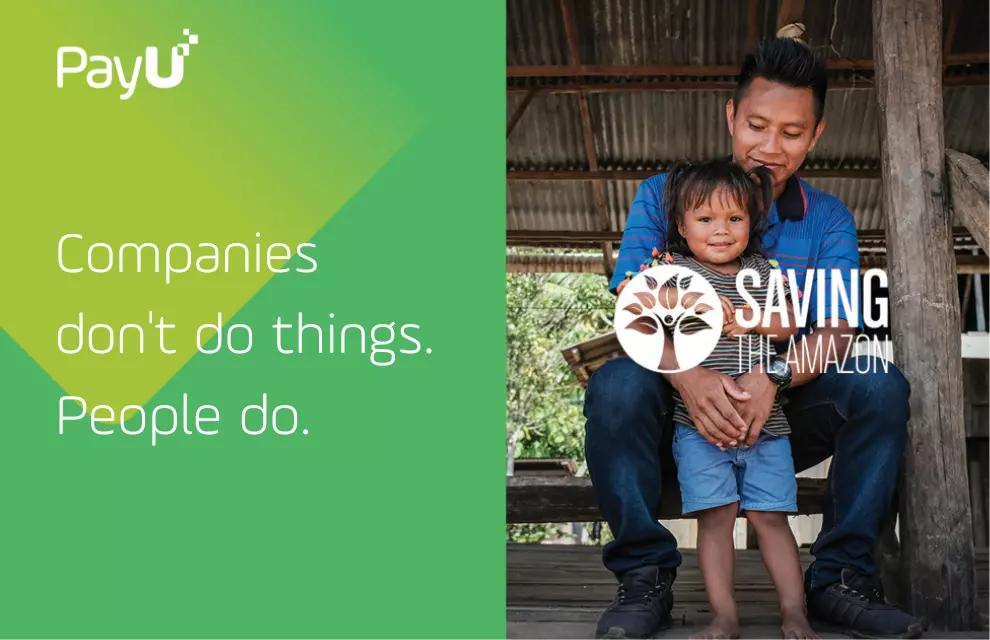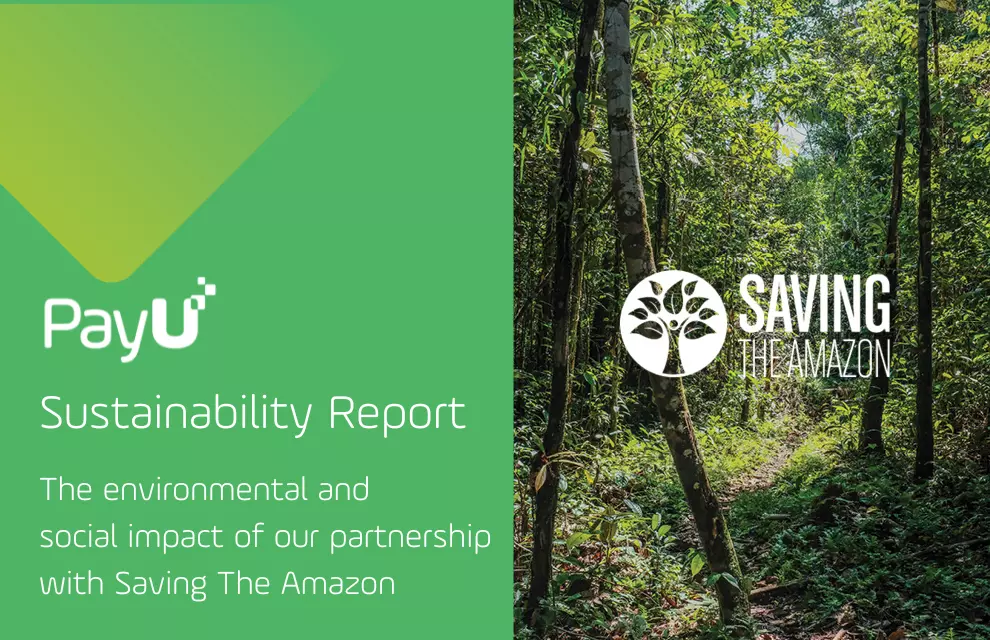23/06/2022
Sustainable Development Goals addressed by PayU with STA
PayU’s joint initiative with Saving The Amazon Foundation addresses a number of sustainable development goals set by the latter.
Goal 13: Climate Take urgent action to combat climate change and its impacts
Goal 13 underlines how the increasing greenhouse emission requires countries around the world to shift economies. One of the largest priority areas are terrestrial and wetland ecosystems.
PayU’s sponsorship resulted in planting 3,205 trees in the indigenous reservation area of Tayazu.
The forest contributes to mitigating the impacts of climate change by capturing carbon and reducing the amount of greenhouse gas in the atmosphere, especially carbon dioxide (CO2). When planting new trees, the STA ensured that new trees were representative of the local flora. Indigenous species, including Ivacabá (Oenocarpus bacaba), Loiro (Ocotea sp.), and Siringa (Sagotia racemosa Baill), make up 94.62% of PayU’s total contribution to the forest.
The Saving The Amazon Foundation estimates that PayU’s work in the forest can potentially capture approximately 4,377 tons of CO2.
Goal 15: Life in land ecosystems
Goal 15 focuses on protecting, restoring, and promoting the sustainable use of ecosystems on land. This includes sustainable forest management and halting or reversing land degradation and biodiversity loss.
Another critical benefit of PayU’s joint project with STA is improving life on land ecosystems. PayU’s forest is located in the great indigenous reservation of Vaupés, in the community of Tayazú.
The region comprises ~200 hectares of forest covering a border area that is shared by several communities. All the improvements in the area benefit not only the Tayazú community but everyone living on the land and in its proximity.
The PayU forest also impacts soil nutrients, positively affecting 7,073 hectares of land and supporting the survival rate of immature plants. Several of the impacted plant species are used for food or medicinal purposes, but they also bear cultural and ancestral significance (for example, the Dabucurí festival).
Goal 1: End of poverty
Goal 1 aims to end poverty in all its forms, all over the world. This is especially important in the context of the Covid-19 pandemic that pushed an additional 119-124 million people into extreme poverty in 2020.
STA works exclusively in areas of extreme poverty to improve the quality of life of vulnerable communities in the country.
More than two-thirds of the Tayazú families that participated in planting the PayU forest don’t have another source of income.
Apart from planting seeds, the Foundation leads important long-term projects to provide employment to local communities. Families that participate in the forest enrichment projects see both medium- and long-term benefits. For example, the species planted in PayU’s forest can be used as a source of wood but also of secondary benefits ranging from medicinal uses to growing food and nutrients.
Goal 2: Zero hunger
The objective of Goal 2 is to finally end the problem of hunger, achieve food security, improve nutrition across global communities, and promote sustainable forms of agriculture.
The census carried out by the Foundation shows that the economic resources derived from crops grown by indigenous families have a direct link to their families’ nutrition.
Many of the plants included in the sowing of the PayU forest are intended for this use to help solve the challenge of food insecurity in the community.
Goal 5: Gender equality
Goal 5 focuses on achieving gender equality and empowering all girls and women to participate in decision-making across their communities equally.
The STA provides women with the opportunity to access the income that wouldn’t be available to them otherwise. Any income generated from work is transferred directly to the women responsible for it – which is crucial for providing them more autonomy in a community where they may be left out of decision-making.
The PayU forest actively contributes to gender equality in the Tayazú community as women make up most of the team working on the planting project – they are directly beneficiaries of the sponsorship.
Goal 8: Decent work and economic growth
The mission of Goal 8 is to promote sustained, inclusive, and sustainable economic growth – combined with full and productive employment and decent work available for everyone.
The 3,205-tree forest planted for PayU takes into account local cultural values. The community’s love for conservation is reinforced by providing job opportunities connected to their traditional experience in planting trees and taking care of their land.
The PayU forest also provides resources such as crops that help improve the quality of life for families in 97.56% of the local communities. The planting process with the Foundation and diversification of income sources plays a key part in this improvement.
Goal 10: Reduced inequalities
Goal 10 aims to reduce inequality within and among countries, especially considering the impact of Covid-19 on reversing the progress made in this area.
The STA finds communities with high multidimensional poverty and lack of employment opportunities in the hope that projects like planting the PayU forest can enact systemic change. The benefits of this activity include offering an alternative to the families in the region and providing them with new initiatives that may improve their quality of life.
With the support of organizations like PayU, the Foundation is focused on supporting communities with the highest levels of multidimensional poverty.
 Payment Solutions
Payment Solutions Services
Services Credit
Credit Resources
Resources About PayU GPO
About PayU GPO

















